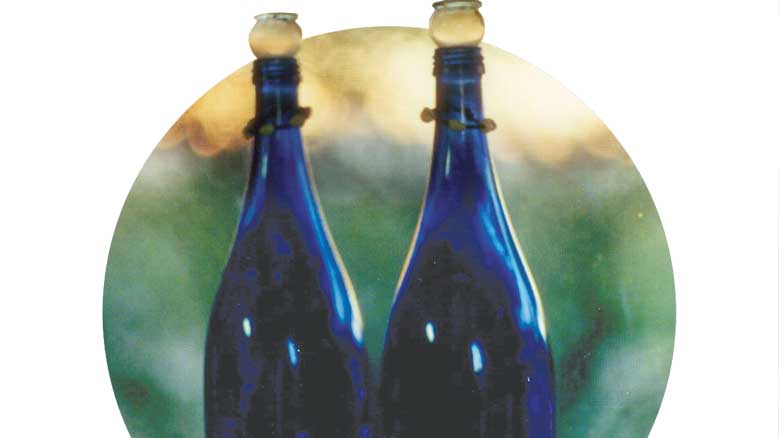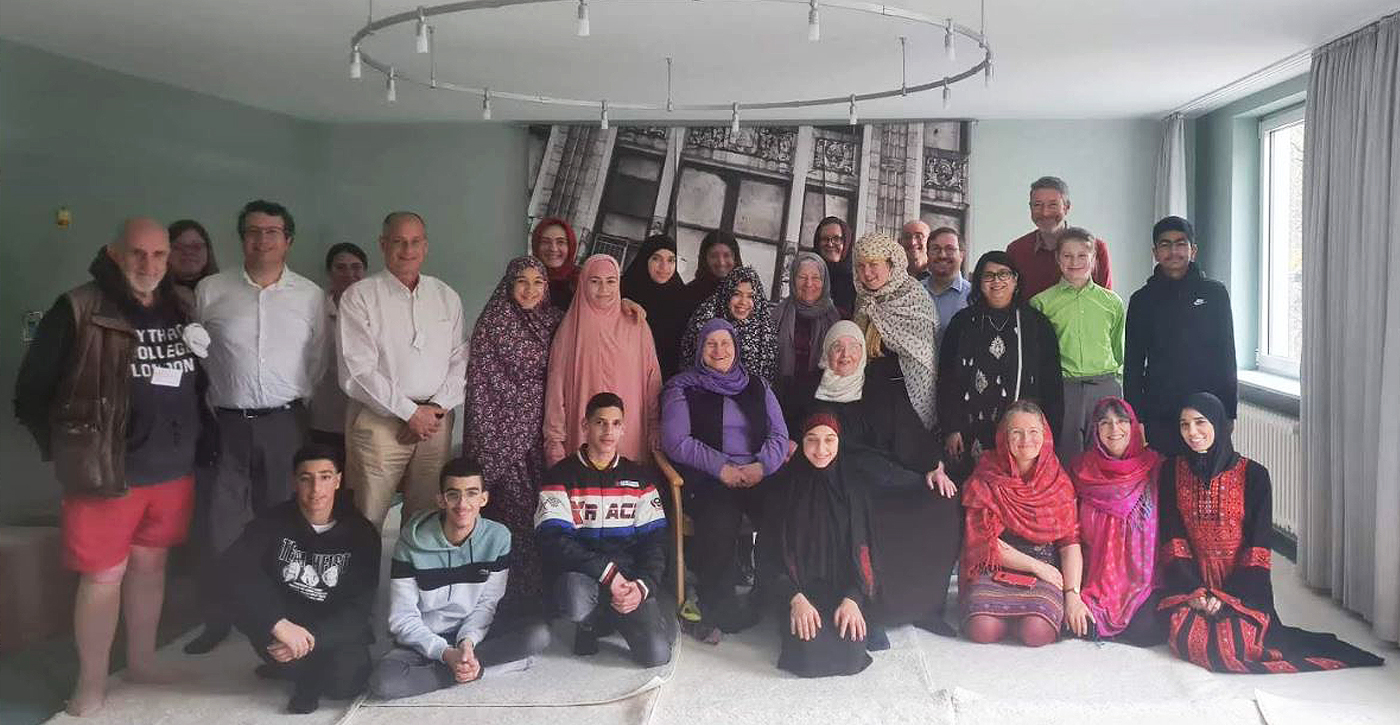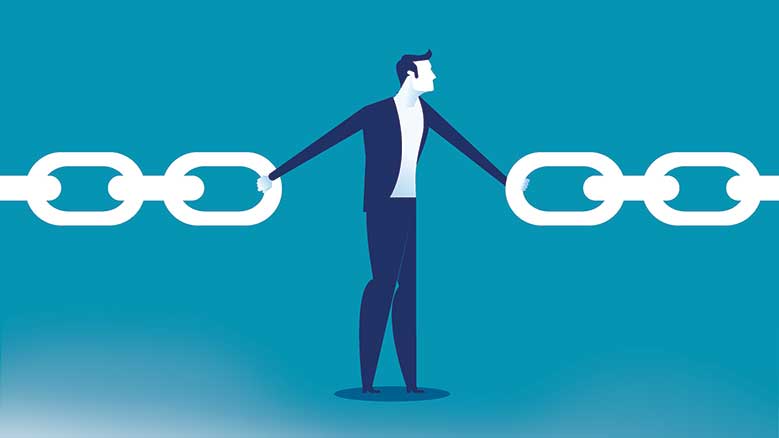
“I’ve never been to a Quaker Havdalah before,” a Jewish friend commented as we tidied up the kiva at Southside Presbyterian Church in Tucson, Arizona, where I had taken a turn leading the nightly prayer vigil, nearly five months into Rosa Robles Loreto’s stay in Sanctuary.
I hadn’t been to a Quaker Havdalah before either, and wondered if anyone had! Havdalah is a ritual that marks the end of the Sabbath and the beginning of the week. Nightfall marks the end of the day in Judaism, so Havdalah takes place Saturday evening. That night in early January, we pulled on our coats, walked outside, and looked up, since Havdalah takes place when the sky is dark enough to see three stars.
When we came inside, we made the traditional Jewish blessing over the fruit of the vine, in our case with the options of grape juice or a flower essence of grapevine that I make as an alternative for people who need to avoid the fruit sugar of juice. We then smelled the sweet spices that remind us of the sweetness of Shabbat, and lit a special braided candle. For the last blessing, the one that contrasts the Sabbath with the work week, we sat in stillness.
When I started attending Pima Meeting here in Tucson, I was a bit surprised by holding the meeting for worship with a concern for business on First Day right after the regular meeting. In the Jewish community, business meetings are not held on the Sabbath; they are considered a form of work, so are convened another day. Was First Day the Sabbath? I wasn’t certain, and I shared my thoughts about Sabbath observance in the Spiritual Companions Group, a small circle of Friends that meets once a month.
 Some of my deepest understanding of this issue was written by a late member of the meeting, Jim Corbett. Jim was one of the founders of the 1980s’ Sanctuary Movement and in his book Goatwalking wrote extensively about the process of civil initiative: taking action when our government does not honor its own laws or there are gaps in the legal process, and also about living in a way that honors all life. He worked closely with Father Ricardo Elford, and with Rabbi Joe Weizenbaum of blessed memory, and I knew both of them. Jim and Father Ricardo often went to Friday night services led by Joe, and loved to usher in Shabbat. Jim’s widow, Pat Corbett, said, “I treasured my Friday evenings at Temple Emanu-El as part of the gathered community.” In Jim’s writing, I came to see a rhythm of the Jewish-Quaker pathway that has been emerging in my life. I still need a Sabbath, and it begins Friday at sunset for me. Saturday is a day of rest and renewal: hiking in nature, talking with friends, laying in the hammock, reading, and doing deep personal reflection. At the beginning of First Day (a literal translation of the Hebrew term for Sunday, Yom Rishon) having been renewed by the Sabbath, I am ready to sit with community and receive guidance for our individual and collective paths. It makes perfect sense to have a meeting for worship followed by a meeting with a concern for business or a committee meeting.
Some of my deepest understanding of this issue was written by a late member of the meeting, Jim Corbett. Jim was one of the founders of the 1980s’ Sanctuary Movement and in his book Goatwalking wrote extensively about the process of civil initiative: taking action when our government does not honor its own laws or there are gaps in the legal process, and also about living in a way that honors all life. He worked closely with Father Ricardo Elford, and with Rabbi Joe Weizenbaum of blessed memory, and I knew both of them. Jim and Father Ricardo often went to Friday night services led by Joe, and loved to usher in Shabbat. Jim’s widow, Pat Corbett, said, “I treasured my Friday evenings at Temple Emanu-El as part of the gathered community.” In Jim’s writing, I came to see a rhythm of the Jewish-Quaker pathway that has been emerging in my life. I still need a Sabbath, and it begins Friday at sunset for me. Saturday is a day of rest and renewal: hiking in nature, talking with friends, laying in the hammock, reading, and doing deep personal reflection. At the beginning of First Day (a literal translation of the Hebrew term for Sunday, Yom Rishon) having been renewed by the Sabbath, I am ready to sit with community and receive guidance for our individual and collective paths. It makes perfect sense to have a meeting for worship followed by a meeting with a concern for business or a committee meeting.
I first read some of Jim Corbett’s writing years before I began attending meeting, at the recommendation of a friend in the progressive Jewish community. When I started attending meeting, Carol S. Kestler then told me that one of her deepest understandings of the Shekhinah, the immanent divine presence, usually seen as feminine, came in attending a members’ meeting of the Saguaro-Juniper conservation organization founded by Jim Corbett and attended by many Quakers. “When the meeting got contentious, someone would suggest we take some silent time. At the end of that, the group easily reached a conclusion that everyone could live with. My sense was I had seen the Shekhinah in action,” said Carol.
I am a long-time meditator, so sitting in silence was not new, but the corporate nature of sitting together in discernment brings me hope. I started attending meeting about a year ago in a wounded place, when my differences with the mainstream Jewish community were coming to a head over resistance to the nonviolent Boycott, Divestment, and Sanctions Movement to end the occupation of Palestinian territories. I felt thankful to be among others deeply committed to nonviolence when Israel began to bomb Gaza in July. I found strength both at Pima Meeting and at Casa Mariposa, an intentional community focused on U.S.-Mexico border issues, which hosts a midweek Quaker worship and community dinner.
 Some of us here in Tucson are drawing connections between border issues in Arizona with those in Israel-Palestine. On both borders separation walls, guard towers, and the detention and questioning of people based on their ethnicity are used to restrict the movement of people through regions that have been their homelands for generations. Israeli writers like Avraham Burg and Ari Shavit have written about how the unhealed trauma of the Holocaust may be being reenacted in Israel in the creation of a state system of racial discrimination, along with those eerily similar guard towers and detention camps. John Heid, a Friend from the meeting and resident of Casa Mariposa, traveled to Germany in August to speak publicly about U.S.-Mexico border issues and pray at Dachau, and our conversations brought these threads together.
Some of us here in Tucson are drawing connections between border issues in Arizona with those in Israel-Palestine. On both borders separation walls, guard towers, and the detention and questioning of people based on their ethnicity are used to restrict the movement of people through regions that have been their homelands for generations. Israeli writers like Avraham Burg and Ari Shavit have written about how the unhealed trauma of the Holocaust may be being reenacted in Israel in the creation of a state system of racial discrimination, along with those eerily similar guard towers and detention camps. John Heid, a Friend from the meeting and resident of Casa Mariposa, traveled to Germany in August to speak publicly about U.S.-Mexico border issues and pray at Dachau, and our conversations brought these threads together.
Casa Mariposa has become a haven for some of us Jews making border connections, as a place to talk over dinner and start planning events. I wonder what the effect would be if I were not the only Jew attending Quaker worship. What if those of us in the progressive Jewish community used the process of discernment I’m experiencing in meetings? New understanding of how our brains work, outlined in Andrew Newberg and Mark Robert Waldman’s How God Changes Your Brain, show how hearing angry words shuts down our higher processing and brings out fight, flight, or freeze responses. In the turmoil of Middle East issues, the calm of the Quaker process can be a balm.
This past fall, some of us asked to celebrate Rosh Hashanah at Casa Mariposa, since the beginning of the Jewish New Year fell on the night of the weekly worship and dinner, and we invited other Jews who no longer felt at home in the mainstream Jewish community.
After setting things in motion for the eve of Rosh Hashanah, some people asked me, “What about Yom Kippur?” John Heid signed up to lead the Sanctuary vigil in silent Quaker worship the coming Friday, and the combination of factors nudged me to lead the vigil in a simple Yom Kippur service focusing on coming into at-one-ment with God as a community action.
When Jim Corbett was alive, he organized a celebration of another of the fall Jewish holy days: Sukkot, in which we pray in fragile huts, sheltered by following divine guidance. This past fall, his widow, Pat, nudged some Jews from Tucson to drive out to Saguaro-Juniper in rural Cascabel. I felt life had come full circle when I prayed with my long-time friend and activist in Jewish community, Carol, among new Quaker and Jewish friends.
When another friend from that gathering, Laurie Melrood, organized Hanukkah at Casa Mariposa, I felt comfortable being in a circle where we celebrated the act of faith of lighting the vial of consecrated oil that burned eight days instead of one. But we examined the effects of reclaiming a temple by force.
At the time of the founding of the state of Israel, the majority of the Jewish community opposed forming a political state, fearing it would lead to intolerant nationalist sentiments. But over time, Judaism and Zionism have become intertwined in the mainstream Jewish community. I feel thankful to be living in the time of untangling belief systems, with many wise teachings from Rabbi Lynn Gottlieb, who served as co-director of American Friends Service Committee’s Middle East Program in San Francisco from 2007 to 2009, and Rabbi Brant Rosen, who began serving this December as AFSC’s Midwest Region’s director, after his activism on Israeli-Palestinian issues became a divisive issue in the congregation he had led.
I also feel much compassion for my forebears who scarred by anti-Semitism had used force in an attempt to survive individually and as a people. While I normally write only nonfiction, recently I wrote a short story of what would have been had Jews learned a Quaker process of discernment and, instead of using force, had followed prophetic teachings and Spirit’s leading to reconnect with the holy land in a peaceful process. I cannot make that be the reality, but the image holds light for me. There are so many hot spots of trauma on our planet, and we go on from where we are, listening to guidance and following our leadings as best we can.





Leading vigils at Southside was one way that our meeting tested the waters for offering sanctuary ourselves. As a small meeting, we chose to partner with First Christian Church, a Disciples of Christ congregation, and on June 9, Daniel Neyoy Ruiz was taken into sanctuary at their church by both congregations. People from both groups stepped up to coordinate, lead vigils, and take turns staying on the premises to offer hospitality. Fortunately, Daniel was granted a stay of his order of deportation on June 18, and our planned service for that evening became one of celebration of his departure from sanctuary.
As part of helping people become more comfortable with signing up to convene a vigil, we held a workshop at PMM to answer questions about vigil leadership and to provide a basic format in English and Spanish that a Quaker vigil leader could use as is or draw upon.
Bienvenidos.
Welcome.
Mi nombre es_____________ y este es/estos son ________. Somos Cuáqueros.
My name is ______ and this is / these are _______. We are Quakers.
[When introducing our way of practice to people for the first time, we’ve found it helpful to at least once read I Kings 19: 8-12 about Elijah/Elias hearing the still small voice (in English and Spanish)]
En la tradición Cuáquera, nos sentamos en silencio, para escuchar mejor y en quietud a la pequeña voz de Dios.
In the Quaker tradition, we sit in silence, to better listen to the still small voice of God.
Sentémonos en silencio por un momento.
Let’s sit some in silence.
[22 minutes after (for a 30-minute vigil]
Gracias Amigos.
Thank you Friends.
Digamos nuestros nombres. Mi nombre es _______.
Let’s say our names. My name is __________.
[look to the person to your side to get the circle going]
Ahora es el momento para que las personas compartan noticias, bendiciones o para solicitar que alguien sean sostenidos en la Luz Divina / en las luz de los divino.
Now is a time for people to share news, or ask to be held in the Light.
Asi termina esta noche, nos vemos la proxima vez.
Now it is time to finish for this evening. See you next time.
English by Deborah Mayaan; translation by Maria José Ramos, Pima Monthly Meeting.
Edward Elwall was apparently a Sabbatarian, unitarian Quaker in the early 18th century, who left a number of writings.